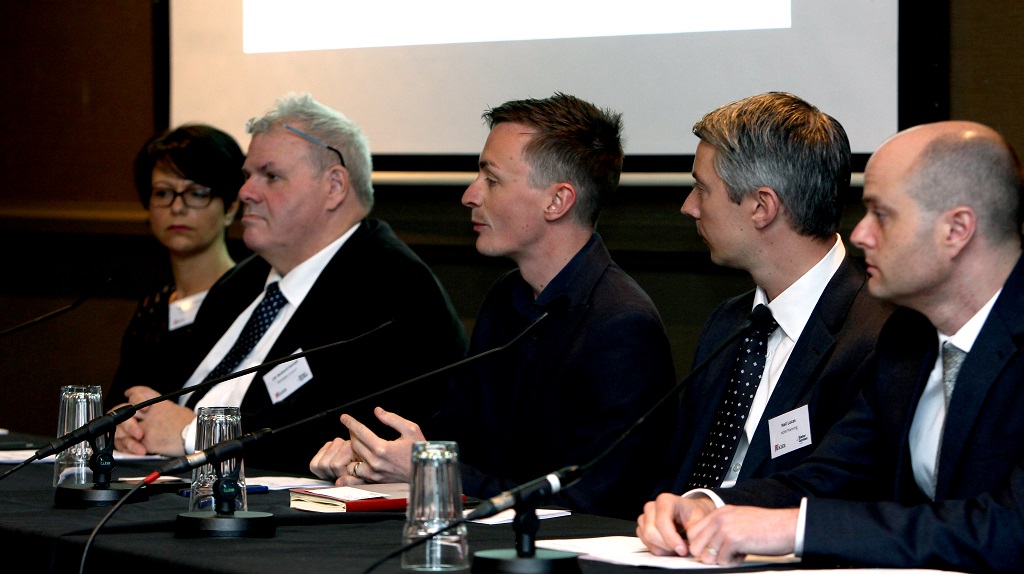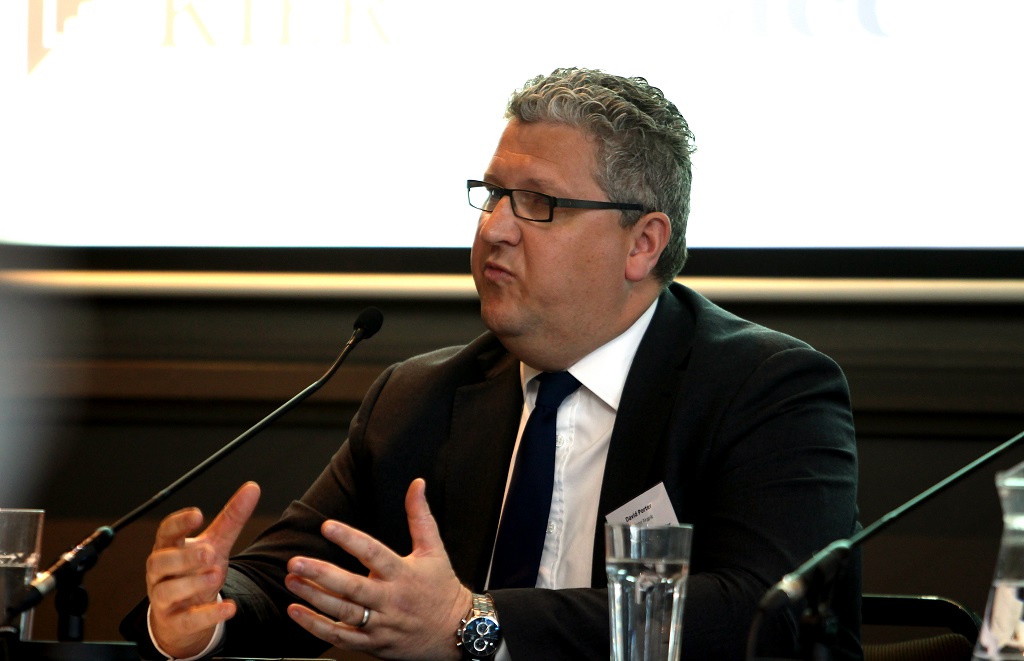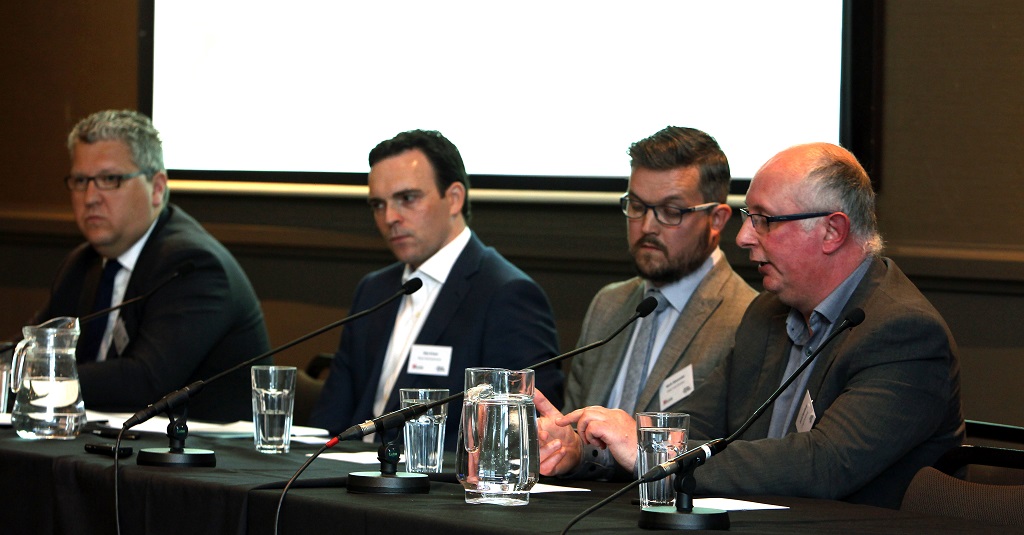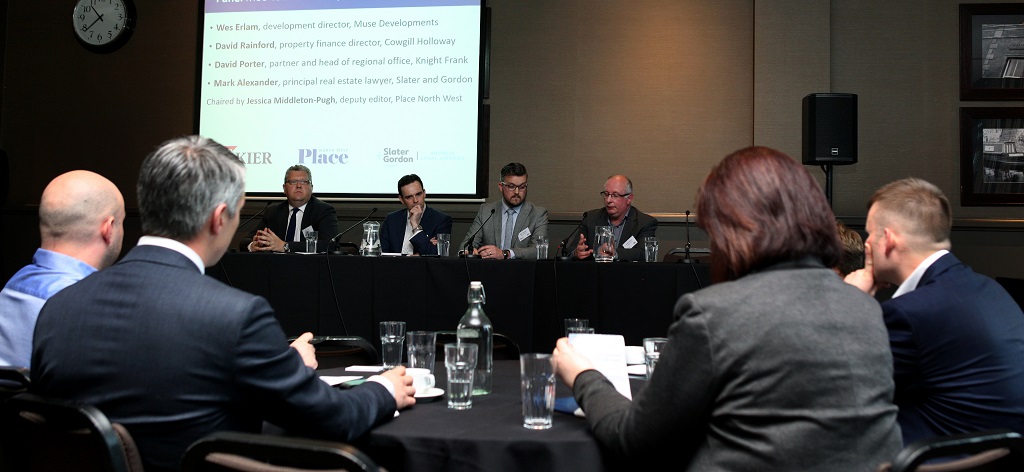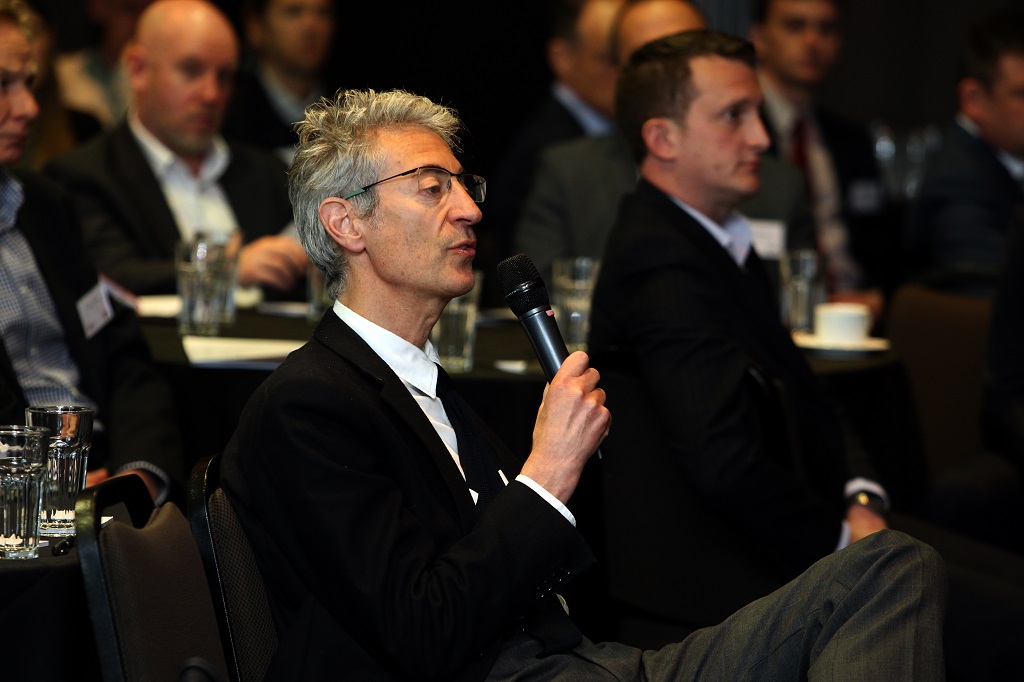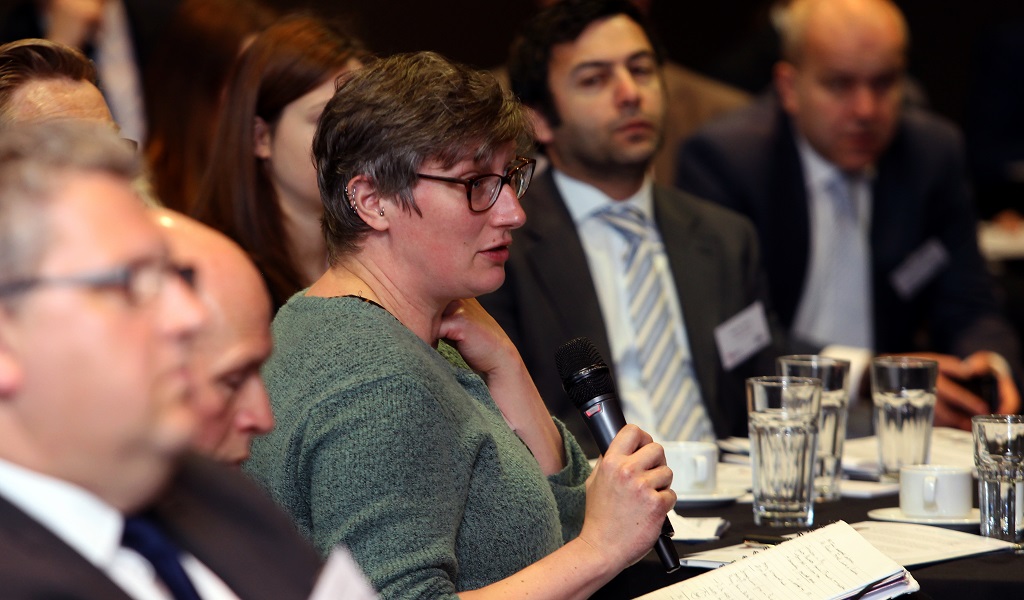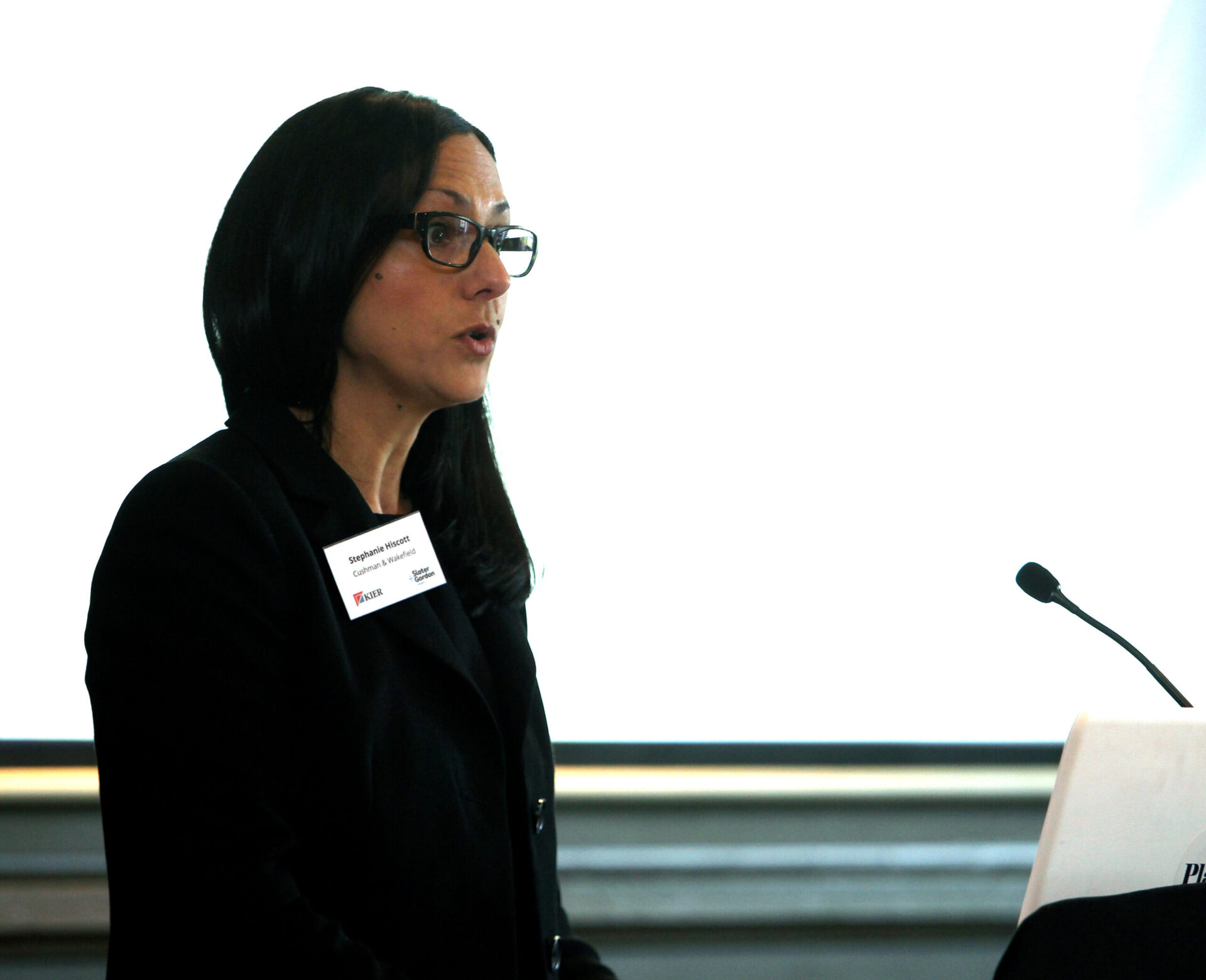Event Summary
M60 Towns: ‘Tough choices’ must be made on green belt
The growth anticipated by the Greater Manchester Spatial Framework requires tough choices to be made on green belt development, Cllr Richard Farnell, leader of Rochdale Council, told the audience at the M60 Towns Development Conference.
 Farnell assured attendees that the focus of the GMSF was brownfield development: “70% of land identified for housing is in the urban area.” However, Farnell said: “There is not enough brownfield land to meet all our needs therefore we will have to look to the green belt too.”
Farnell assured attendees that the focus of the GMSF was brownfield development: “70% of land identified for housing is in the urban area.” However, Farnell said: “There is not enough brownfield land to meet all our needs therefore we will have to look to the green belt too.”
See below for gallery + slides
Farnell said:
- Land is needed for 200,000 jobs and 220,000 homes in the next 20 years to meet the need for the “fast-changing economy” of the region
- In the next 20 years, Greater Manchester will be one of the world’s leading city regions, competing with European cities
- Brexit has provided an unprecedented opportunity for local government to shape how the region grows
- The spatial framework needs to be backed up by investment into infrastructure including transport and public services
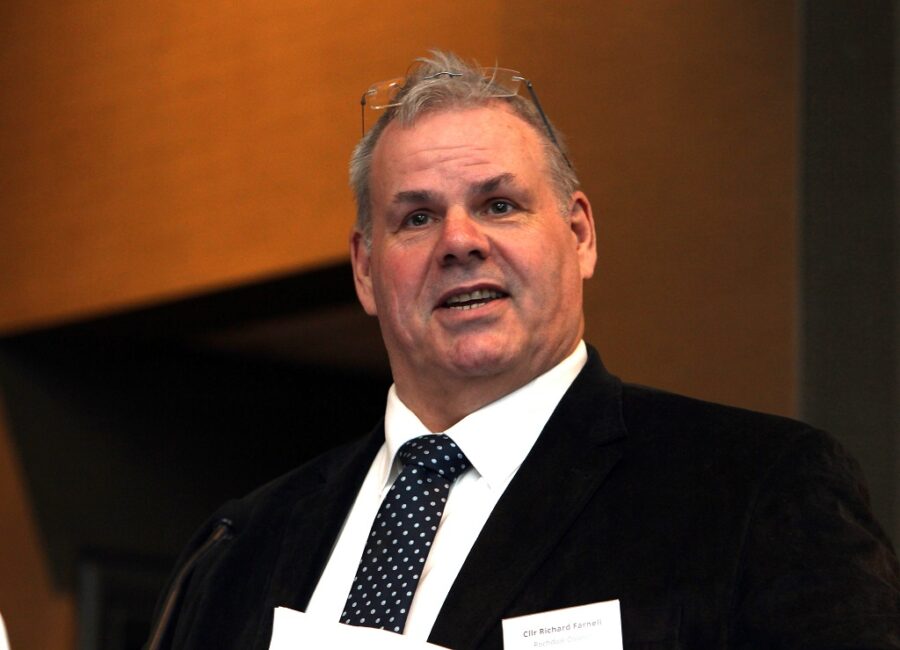
Cllr Richard Farnell, Rochdale Council
Around 100 people gathered at the Village Hotel in Ashton-Under-Lyne for Place North West’s half-day conference, sponsored by Kier and Slater + Gordon.
Farnell spoke alongside Paul Smith, managing director of Strategic Land Group and member of Housing the Powerhouse campaign; Neil Lucas, partner, HOW Planning; Cllr Sean Anstee, leader, Trafford Council; Caroline Simpson, corporate director for place, Stockport Council, on a panel discussing housing, planning and the GMSF.
In a session on commercial development in M60 towns, Wes Erlam, development director, Muse Developments, spoke alongside David Rainford, property finance director, Cowgill Holloway; David Porter, partner and head of regional office, Knight Frank; Mark Alexander, principal real estate lawyer, Slater + Gordon.
Charles Smith, principal heritage advisor, Historic England, and Stephanie Hiscott, associate, Cushman & Wakefield, discussed the development of historic mills, and Smith was joined on a panel by Emma Barton, assistant director for economy and regeneration, Wigan Council; Stephen Young, director of place, Bolton Council; Bryn Cooke, head of strategic property partnerships and investment, Oldham Council.
Future of Tameside
Paul Smith discussed how a more ambitious GMSF could improve the future of Tameside, as an example, using research produced by Barton Willmore. Smith explained:
- Tameside currently faces challenges affecting most M60 towns, including a constrained land supply and an ageing population, with a “47% increase in over 65s by 2035”
- Tameside’s employment land supply is at its lowest for 15 years, and only twice in those years has the local target housing supply been met
- Infrastructure is needed to facilitate the delivery of the framework such as the delivery of a station at Droylsden, motorway junction improvements, three health centres and three primary schools, among others
- Consequently, there will be 10,000 new jobs if the infrastructure recommended in the GMSF is implemented, reducing the loss in working age population and £40m additional council tax
- Smith believes the framework could be even more ambitious: “Why settle for a Northern Powerhouse when we could be a European one”
Pragmatic politics
Anstee insisted the framework was essential to sustainable growth across Greater Manchester. He explained:
- It is necessary to balance the public’s view with planning for growth. Not planning for growth would be “quite dangerous”
- Although the GMSF plan for growth is less than Birmingham, Greater Manchester’s record of delivery is better
- Politics must be rooted in pragmatism and growth without a plan would lead to bad development
Caroline Simpson, corporate director for place at Stockport Council, also argued for the implementation of the GMSF, with people looking to the council for a strategic plan which anticipated district centres as vital to growth and focused on brownfield sites for development.
Neil Lucas, director at How Planning addressed the differences between the London and Manchester mayor. He pointed out that the Manchester mayor would have less power over the GMSF, with a more integrated and collaborative position within the combined authority than the London counterpart. Lucas also referred to the challenge of delivering the scale of growth the GMSF promised without the use of green belt sites.

Panel, from left: David Porter, Knight Frank; Wes Erlam, Muse Developments; Mark Alexander, Slater + Gordon; David Rainford, Cowgill Holloway
Divide between North and South Manchester
David Porter, partner at Knight Frank discussed the increasing divide between the wealth in the south of the region compared to the lack of growth in the north. He said:
- Manchester Airport and the reputation of Cheshire was leading to development in those areas
- Porter believed M60 towns should specialise in particular industries to improve the divide, and points to the success of Rochdale with large scale distributors locating to the borough
Funding commercial development
Wes Erlam, development director of Muse Developments; David Rainford, property finance director at Cowgill Holloway; and Mark Alexander, principal real estate lawyer at Slater + Gordon identified the issue of funding for commercial projects:
- Erlam discussed how Muse delivered One Stockport Exchange in partnership with Stockport Council and how this sort of arrangement was becoming more common commercial schemes
- Erlam argued that developers often found it difficult to source “sensible commercial lending” and were turning to partnerships with councils to access funding that would be unavailable to developers without a partial pre-let
- Rainford agreed developers in the commercial sector struggle to gain funding in M60 towns, especially for smaller schemes
- Alexander discussed the market need for commercial space in M60 towns, with digital industries looking to move out of the city centre, but argued that the digital infrastructure needed improving
Untapped heritage assets
Charles Smith, principal heritage advisor at Historic England and Stephanie Hiscott, associate at Cushman & Wakefield discussed how former textile mills offered a “major opportunity for accommodating the North’s growth needs.” The pair revealed that:
- Greater Manchester has 539 historic mills
- Mills across the North could provide 50,000 homes
- Repurposing textile mills aligns with all current policy objectives, including the development of brownfield, as opposed to greenfield, sites

Stephen Young, Bolton Council
Bryn Cooke, head of strategic partnerships at Oldham Council; Emma Barton, assistant director for economy and regeneration; and Stephen Young, director of place at Bolton Council, discussed how heritage schemes were often not viable without council intervention. Cooke said:
- Old Town Hall had been converted into cinema and restaurants in a direct development by Oldham council, with the view that if the council didn’t development the site, nobody would
- A significant funding gap in the redevelopment of historic buildings meant that only councils were in a position to take on the projects
- However, with the viability gap so large on heritage schemes, councils cannot fund each project
- Cooke discussed the need for support on heritage projects, as well as the need for pragmatism regarding the conservation of historic buildings
Barton of Wigan Council agreed with Cooke, arguing for:
- the public sector to work in partnership with the private sector for heritage developments, pointing to schemes within the Wigan Pier Quarter project
- the creation of volunteering opportunities for the local community to take part in regeneration projects
Stephen Young discussed the development of new-build offices around the Bolton Interchange, which provides links to Manchester city centre while enabling businesses to cut costs by relocating to Bolton. Young added that it would be a challenge in terms of affordability and accessibility to convert the mills into commercial space on the cusp of Bolton town centre.
- To view the presentations from the event, visit our SlideShare page
Click any image below to launch gallery
- Cllr Richard Farnell, Rochdale Council
- Cllr Sean Anstee, Trafford Council
- Paul Smith, Strategic Land Group and Housing The Powerhouse
- Caroline Simpson, Stockport Council
- Place North West deputy editor, Jessica Middleton-Pugh chaired the conference
- Panel, from left: Caroline Simpson, Stockport Council; Cllr Richard Farnell, Rochdale Council; Cllr Sean Anstee, Trafford Council; Neil Lucas, HOW Planning; Paul Smith, Housing The Powerhouse
- Wes Erlam, Muse Developments
- David Porter, Knight Frank
- Mark Alexander, Slater & Gordon
- Panel, from left: David Porter, Knight Frank; Wes Erlam, Muse Developments; Mark Alexander, Slater + Gordon; David Rainford, Cowgill Holloway
- Panel, from left: David Porter, Knight Frank; Wes Erlam, Muse Developments; Mark Alexander, Slater & Gordon; David Rainford, Cowgill Holloway
- Charles Smith, Historic England
- Panel, from left: Stephen Young, Bolton Council; Emma Barton, Wigan Council; Charles Smith, Historic England; Bryn Cooke, Oldham Council
- Emma Barton, Wigan Council
- Bryn Cooke, Oldham Council
- Stephen Young, Bolton Council








